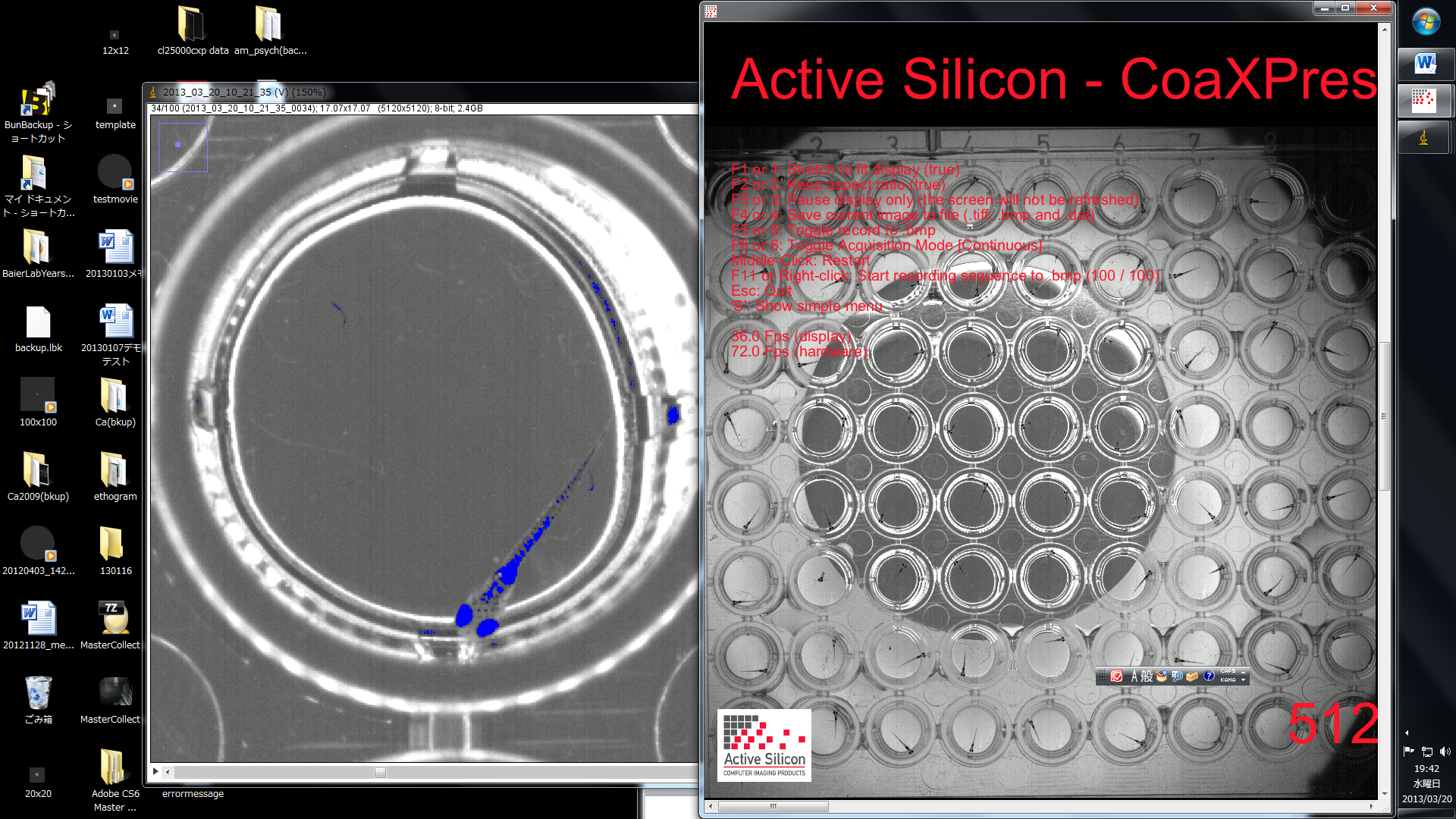When we record from many zebrafish larvae in multi-wells, the wall of the wells may hide the larvae. This problem can be solved by the use of a telecentmeric lens that has a huge size to cover the entire area where the wells are present. Here is an example of a recording from 72 zebrafish larvae in a 96 well plate.

Unfortunately, the lens used here does not cover the entire plate. The 25MP camera has a enough resolution to see the eyes of the individual larva. Below is a single well zoomed in.

Lens: . TC16M120 Telecentric lens for 35 mm detectors, magnification 0.289 x, F-mount http://www.opto-engineering.com/products/very-large-detector-tc-lens-model-TC16M120
Camera: CL25000CXP https://www.stemmer-imaging.co.uk/en/news/2012-06-optronis-cl25000cxp-53-images-per-second-with-25-megapixels/
Camera board: Active Silicon AS-FBD-4XCXP6-2PE8 https://www.activesilicon.com/products/firebird-coaxpress-frame-grabber-quad-CXP-6/
Things to be considered
- One frame from a 25MP camera has a file size of 25MB. It may not be realistic to save a movie file from the time-lapse recording and analyze it later. Real-time image processing may be preferred.
- The image shown above was taken with a sample application that came with the camera. There seems no camera acquisition software for this coaxpress camera.
- Active Silicon NOW (, but not in 2013,) supports National Instruments LabVIEW (https://www.activesilicon.com/products/labview-driver/). Writing a custom script (VI, Virtual Instrument) in LabVIEW may be the way to go.
